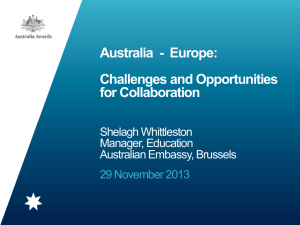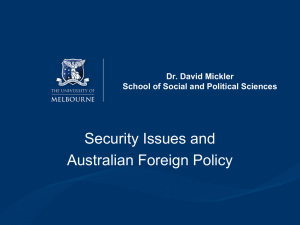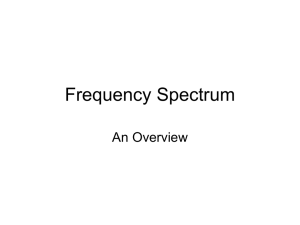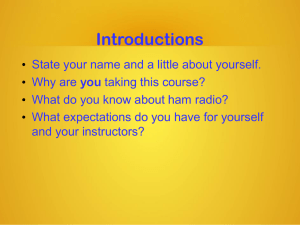Australian amateur radio
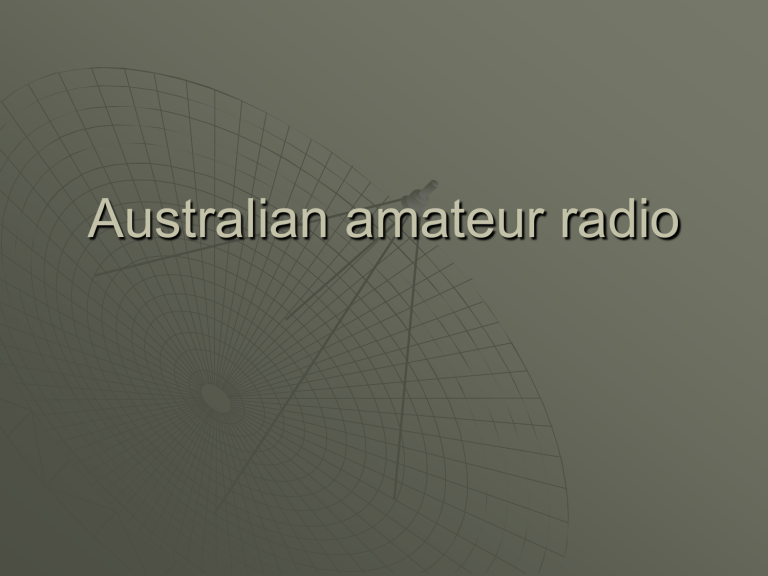
Australian amateur radio
Wireless institute of Australia
Equal to ARRL
World's first and oldest National Radio Society
Founded in 1910.
Member of the International Amateur Radio Union
Represents all Amateur Radio Operators in
Australia to the various government bodies in this country.
Awards and contests, AR mag, QSL bureau, call book, weekly broadcast
Australian Communication and
Media Authority
Equal to FCC
Amateur radio operator licenses, examination, operating procedures
Amateurs visiting Australia
More code signals, spectrum usage
Australian Call Signs
External Territories Suffixes
A – Antarctica
C – Cocos Island
L – Lord Howe Island
M – Mellish Reef
N – Norfolk
X – Christmas Island
Categories of licence
Foundation
can only use a transmitter that has been manufactured commercially can only use voice, on either SSB, AM or
FM or Morse using a manually operated
Morse key not more than 10 watts output power ssb or 3 watts output power AM, FM or CW.
Bands permitted are the 80, 40, 15 and
10 meter bands as well as the 2 meter band and the band 430 to 450 MHz, subject to necessary bandwidth restrictions.
Standard license
can use any emission mode with a necessary bandwidth not exceeding 8 kHz on the 80, 40, 20 and 15 meter bands any emission mode with a necessary bandwidth not exceeding 16 kHz on the 10 meter band, the band 52 to 54 MHz, the 2 meter band, and the bands 430 to 450
MHz, 1240 to 1300 MHz, 2,400 to 2,450
MHz and 5.650 to 5.850 GHz output power limits of 100 watts (PEP for
SSB) and 30 watts (constant carrier modes).
Advanced licence
• can use any emission mode with a necessary bandwidth not exceeding 8 kHz on all bands below 24.990 MHz
• any emission mode with a necessary bandwidth not exceeding 16 kHz on the 28.00 MHz to 29.70
MHz band
• any emission mode with a necessary bandwidth not exceeding 100 kHz on the 6 and 2 meter bands
• any emission mode with no bandwidth restriction in the amateur bands above 420 MHz
• limits of 400 watts (PEP for SSB) and 120 watts
(for constant carrier modes).
Visitors to Australia
When visiting some countries you don't need to do anything other than bring your equipment and the license issued by your home country. This is due to an international agreement between radio communications administrations.
Australia is working towards that situation, but is not there yet. You still need to take out an Australian amateur radio license with a VK call sign, if you want to operate in
Australia. However this may change in 2006 so check
ACMA's website if it is important to you.
The Australian Communications and Media Authority has published a comprehensive document about this subject .
What it says is
Don't just bring a radio and expect to use your foreign license and call sign. To operate as an amateur in Australia you need an Australian license and an Australian call sign
VK*xxx.
Apply in person at any ACMA office or in writing at least 3 months before your intended visit.
Visitors to Australia
There is a long list of countries with which
Australia has reciprocal licensing agreements - i.e.. Australia recognizes the foreign country's license qualifications and vice versa. Amateurs from those countries will basically have no problem in being allocated a license that corresponds to their qualifications.
There is another list of countries which have license conditions that Australia recognizes as sufficiently similar to ours, that we will grant an Australian license.
Visitor to Australia
Visitor's licenses are not automatically renewable and if they are not issued under the terms of a reciprocal agreement, are endorsed so they cannot be used as the basis of a license issue by another country. However, visitor licenses are normally renewed on request, providing the conditions are still satisfied.
You need to supply ACMA with your current Amateur license or certificate of qualifications your passport and proof, egg. a visa, of the duration of your visit; a completed license application form (RF57); and the current license fee which is $AUD53.90 (in Australian dollars).
You can do this in person, or by mail. If doing it by mail you can send certified copies of those precious documents instead of the originals.
For more details please consult the ACMA web site.
Activities in Australian Amateur
Radio
FM and repeaters
Satellites
Fox hunts
VK ham online swap, local swaps
Home brewing
Mobile and portable operation
Contests and field days
Radio clubs
There are many radio clubs and societies in Australia. Most serve a particular town or region. Typical activities include study courses, examinations, excursions, social events, field day contests, constructional projects and on-air gatherings (or nets).
Some fortunate clubs have their own rooms, while others meet in school classrooms or scout halls. Joining a club is a good way of meeting amateurs in your area.
Misc Australian radio
John Moyle, VK2JU
John Moyle was a leading amateur radio personality from the 1930's up to 1950.
The contest is held to commemorate his great contributions to radio (and to the use of radar in World War II), and to give amateur radio operators some practice away from the convenience of their homes.



